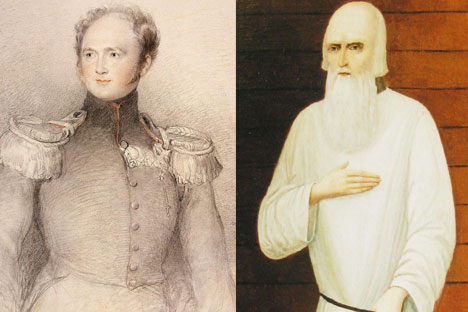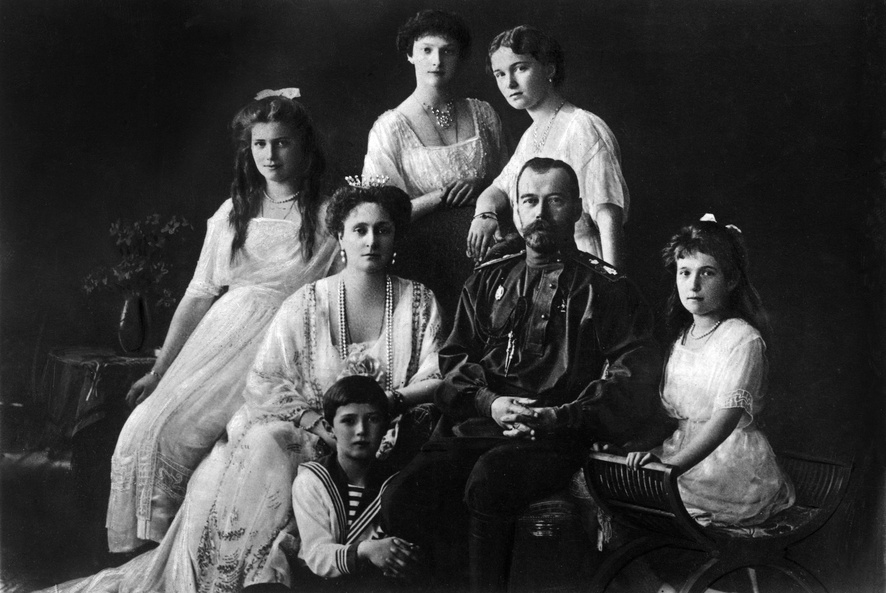Tsar Alexander I may have secretly finished his life as a church elder

Alexander I (L) and Elder Fyodor. Source: Vostock Photo, open sources

Russian tsar Alexander I. Source: Vostock photo
Graphology experts have confirmed that the handwriting of Elder Fyodor of Tomsk and that of Tsar Alexander I is identical. The sensational finding, presented at a forum in Tomsk dedicated to Emperor Alexander I means the tsar died much later than is usually acknowledged.
Svetlana Semenova, President of the Russian Graphological Society, who analyzed manuscripts written by the emperor and the Elder Fyodor, said that they contain the handwriting of one and the same man.
In a blind experiment, graphologists examined manuscripts that Alexander I wrote when he was 47 years old and those written by Elder Fyodor at the age of 82.
"Graphologists confirm that it is highly probable that it is one and the same person," said Semenova. "The symbols did not change with age."
The graphologists also declared that the handwriting of Alexander's wife Elizabeth Alexeyevna and a nun, Vera Molchalnitsa, is also identical. According to legend, the imperial couple staged their deaths and dedicated the remainder of their lives to the church.
Legendry truth
Scientists have been discussing the personality of Fyodor of Tomsk for several decades. Suspicions that the elder was the emperor were already being voiced during his life.
In the last years of his life Alexander had mentioned his intention to abdicate and dedicate his life to God. After his sudden death in 1825 at the age of 47, a legend arose that he had staged his own death to wander throughout Russia to expiate his sins.

Elder Fyodor of Tomsk. Source: Open sources
That Fyodor of Tomsk and Alexander were one and the same man was already raised at the time. 19th century lawyer Anatoly Koni suggested the handwriting of the two was identical. But early in the 20th century Alexander's biographer, Grand Duke Nikolai Mikhaylovich, ordered experts to compare manuscripts and announced that the handwriting was different.
Historic controversy
The controversy excited interest beyond legal and academic circles: novelist Leo Tolstoy discussed the subject on more than one occasion with Grand Duke Nikolai Mikhaylovich.
The controversy has raged until today. Gazeta.ru newspaper resolved to make its own independent investigation. The publication asked the forum's organizers, the Russian Geographical Society, to conduct a study using samples of writing without telling the experts who the authors were. The result is not only sensational but could help create a new tourist industry - following in the footsteps of Fyodor from Krasnoyarsk to Tomsk.
"Foreigners take an active interest in the identity of Alexander I and Fyodor," Yevgeny Kovalevsky of the Russian Geographical Society told Gazeta.ru. "The goal now is to attract investment in a tourist route between Tomsk and Krasnoyarsk."
Wanderer Fyodor Kuzmich arrived in the Siberian town of Tomsk in 1837. He led an ascetic life, but his manners revealed a well-bred and educated person. He earned his livelihood by teaching children to read and write, the Holy Scriptures and history. Fyodor would only accept food, refusing monetary payment. He was respected for his righteous life and people sought him out for advice on everyday issues.
In 1984 the Russian Orthodox Church canonized Fyodor Kuzmich for his asceticism as one of the righteous in the Assembly of Siberian Saints. Fyodor's relics are one of Tomsk's principle sacred objects.
Based on materials from Rossiyskaya Gazeta and Gazeta.ru
All rights reserved by Rossiyskaya Gazeta.
Subscribe
to our newsletter!
Get the week's best stories straight to your inbox
